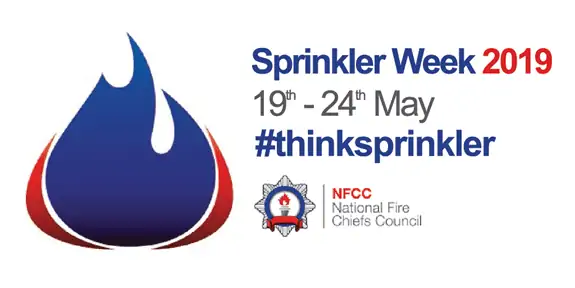
Royal Berkshire Fire and Rescue Service (RBFRS) is supporting National Sprinkler Week, a National Fire Chiefs Council campaign running from 19 – 24 May.
During National Sprinkler Week, RBFRS is hoping to dispel many of the common misconceptions about sprinklers and encourage their installation. As part of one of RBFRS’ strategic commitments to provide advice, consultation and enforcement in relation to fire safety standards in buildings, there is a focus on increasing the installation of sprinklers and other fire suppression systems.
Area Manager, Tony Deacon, said: “The case for installing sprinkler systems is compelling; they save lives and reduce injuries, protect firefighters who attend incidents and reduce the amount of damage to both property and the environment from fire. Sprinklers are the most effective way to ensure that fires are suppressed or even extinguished before the fire and rescue service can arrive.”
Here are some of the common misconceptions about sprinklers:
- Sprinklers are hugely expensive.
Actually, the costs of installing sprinklers are roughly equivalent to carpeting the same building in new buildings. However, damage from fires can cost hundreds of thousands of pounds – sometimes running into millions of pounds. Losses from fires in buildings protected with sprinklers, in comparison, are estimated to be one-tenth of those in unprotected buildings. Fitting sprinklers can save money in some areas – insurers will often offer premium discounts to premises with sprinkler systems, and policy excesses may be lower.
- When there is a fire, all the sprinkler heads go off at once.
Each head is independent and only the head(s) adjacent to the fire go off as the heads are activated by heat and not smoke.
- Sprinklers can go off accidentally.
Records show that the chance of an accidental discharge from a sprinkler is in the region of 16 million to one. They will only go off if there is a fire, which increases the heat beyond the defined sprinkler trigger point (typically 135 to 165°F (57.2 to 73.9°C).
- Water damage is as bad as the fire damage.
A typical sprinkler discharges 55 litres per minute. A firefighting hose discharges over 600 litres per minute. You can expect a sprinkler to discharge less than 5 percent of the water used by the fire service.
For more information on sprinkler systems, please visit: rbfrs.co.uk/ThinkSprinkler.